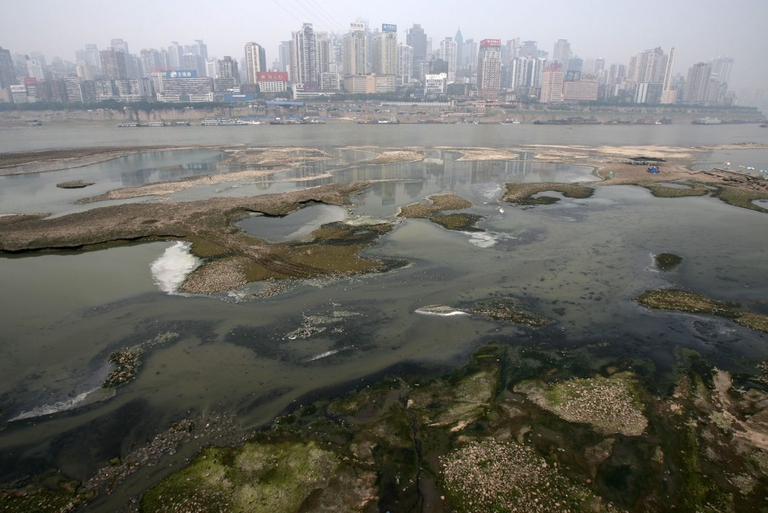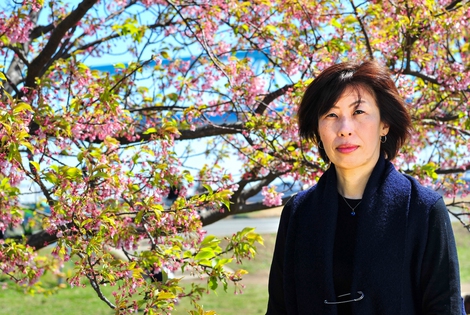
Three people putting the protection of the planet before themselves. Three powerful stories from Latin America, the deadliest region for environmental activists.
Many consumer products such as textiles and leather products, firefighting foams, cleaning products and pesticides contain PFASs (per- and polyfluoroalkyl substances), known in the United States as perfluorooctane sulfonate (PFOS) and perfluorooctanoic acid (PFOA). Cookware, carpets, fabrics for furniture and even paper packaging for food also contain these chemicals. Used in manufacturing due to useful
Many consumer products such as textiles and leather products, firefighting foams, cleaning products and pesticides contain PFASs (per- and polyfluoroalkyl substances), known in the United States as perfluorooctane sulfonate (PFOS) and perfluorooctanoic acid (PFOA). Cookware, carpets, fabrics for furniture and even paper packaging for food also contain these chemicals. Used in manufacturing due to useful properties such as fire resistance and stain repellency, these have been found in the environment, wildlife and humans. Their health effects include preeclampsia during pregnancy, cancer, and thyroid and fertility problems.
Though they aren’t regulated internationally, in 2006 the United States’ Environmental Protection Agency (EPA) asked eight companies to stop their use of these chemicals by 2015, which they did. However whilst PFASs aren’t produced in the USA anymore, contamination persists. In 2015 the EPA issued a health advisory to provide information and set a limit for drinking water at 70 parts per trillion, stating that higher levels would expose the population to adverse health effects. Many scientific studies though recommended a far lower one part per trillion level to protect public health and the guidance in the European Union is set to this level. Even in the US state of New Jersey, for example, suggested levels are five times lower than those of the EPA.
Starting in 1951, the US-based chemical company Dupont began using a laboratory-formed chemical known as Perfluorooctanoic acid (PFOA) or C8 (so called because it contains eight carbon molecules) to smooth the appearance of another chemical (PFTE) known under the brand name Teflon. This compound is used as a common anti-stick covering for pans and PFOA is employed during its production process though it is burned off and isn’t present in the final product. Teflon was produced in DuPont’s factory in Parkersburg, in the US state of West Virginia, until 2002 when it was phased out.
This compound is toxic and persistent, accumulates in the human body and escapes into the air easily: in fact, the counties of Kentucky, Ohio and West Virginia still detect it in drinkable water, and more than 3,500 lawsuits were filed against DuPont after scientific studies demonstrated the link between certain type of cancers and immune system diseases and the pollution of drinking water in the areas near the Dupont factory. Starting from 2015 the company was obliged to pay around 18 million dollars for the only three cases closed by a jury, hence its offer to pay 670 million dollars to settle them all, plus 50 million a year for five years for any other claims that may arise.
While most of the world is phasing the production of Teflon out, in countries with fewer restrictions like India and Russia it is still produced.
China is the biggest source of PFASs today with production tripling between 2004 and 2012. In the Shandong province, along the Xiaoqing river, there is a factory producing Teflon that for years emitted more PFOAs than any other industrial facility in the world, reaching 500 times the safety level set by the EPA for drinking water. However, in China too this chemical has found resistance on the part of its population: people are slowly realising the harmful effects on fishing and on water quality as well as human health and, consequently, environmental activism is becoming increasingly widespread.
Share your Ideas and help us to Detox the outdoor brands at >> https://t.co/dk98tWAwj1 pic.twitter.com/nEwTsclYzN
— Greenpeace (@Greenpeace) 7 gennaio 2016
PFCs are very similar to PFASs and are a family of man-made, fluorine-containing chemicals with unique properties to make materials stain and waterproof and are thus widely used in the production of outdoor clothing. Patagonia is among the companies currently researching a solution to phase them out. This commitment could explain its recent investment in Beyond Surface Technologies, a Swiss startup developing plant-based replacement chemicals.
Read more: Be careful what you wear. Greenpeace’s campaign against PFCs in outdoor clothing
Activists all over the world have petitioned the outdoor industry to stop using PFCs in their fabrics but aren’t satisfied with the results achieved by many of them, stating that for the moment they’ve just substituted one pollutant (long chained PFCs) with another (short chained PFCs). Some studies suggest that short chained PFCs can also be harmful to the environment and potentially to human health, but the EPA doesn’t require safety testing before new chemicals are used in products. Alternatives to harmful PFCs are possible and some small outdoor brands are already using them in their collections or making commitments to do so in a reasonable timeframe, such as Rotauf, Vaude, Fjällräaven and Paramo. Some of these alternatives to PFCs are waxes, paraffins, dendrimers and silicones whilst other alternatives are still in their trial phase, but could soon become available.
It is ironic that brands, especially those whose existence depends entirely on nature, are contributing to spoiling it. The time to set concrete deadlines and change the status quo is now. Alternatives are possible and the sooner we start freeing the environment of toxic chemicals the better it will be, also considering that the process will be a long one.
Siamo anche su WhatsApp. Segui il canale ufficiale LifeGate per restare aggiornata, aggiornato sulle ultime notizie e sulle nostre attività.
![]()
Quest'opera è distribuita con Licenza Creative Commons Attribuzione - Non commerciale - Non opere derivate 4.0 Internazionale.
Three people putting the protection of the planet before themselves. Three powerful stories from Latin America, the deadliest region for environmental activists.
Influential scientist, activist and author Vandana Shiva fights to protect biological and cultural diversity, and against GMOs.
Kimiko Hirata has blocked 13 new coal plants in Japan, but she hasn’t done it alone. The 2021 Goldman Prize winner tells us about her movement.
The Goldman Environmental Prize, the “green Nobel Prize”, is awarded annually to extraordinary activists fighting for the well-being of the planet.
We talk to Shaama Sandooyea, activist and marine biologist from Mauritius onboard Greenpeace’s Arctic Sunrise ship in the heart of the Indian Ocean.
Arrested for supporting farmers. The alarming detention of Disha Ravi, a 22-year-old Indian activist at the fore of the Fridays for Future movement.
Water defender Eugene Simonov’s mission is to protect rivers and their biodiversity along the borders of Russia, China and Mongolia.
Chibeze Ezekiel, winner of the 2020 Goldman Environmental Prize for Africa, is fighting to guide new generations towards a renewable future.
Leydy Pech, winner of the 2020 Goldman Environmental Prize for North America, is the beekeeper who defended Mexican Maya land against the agro-industry.








